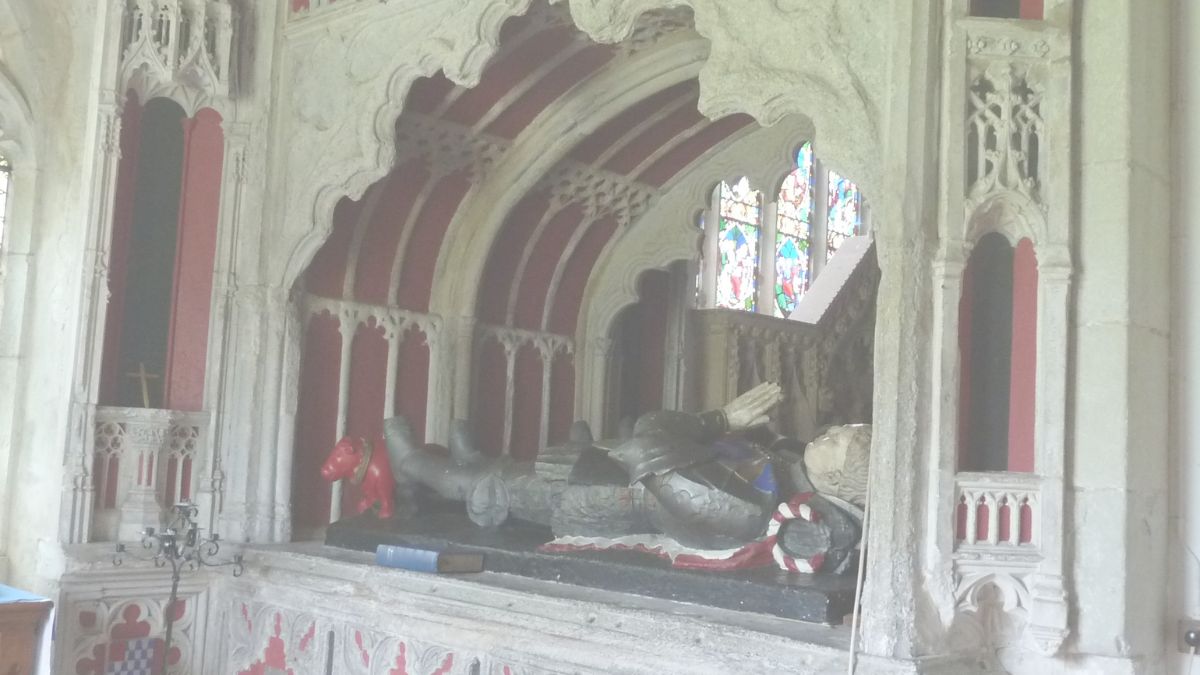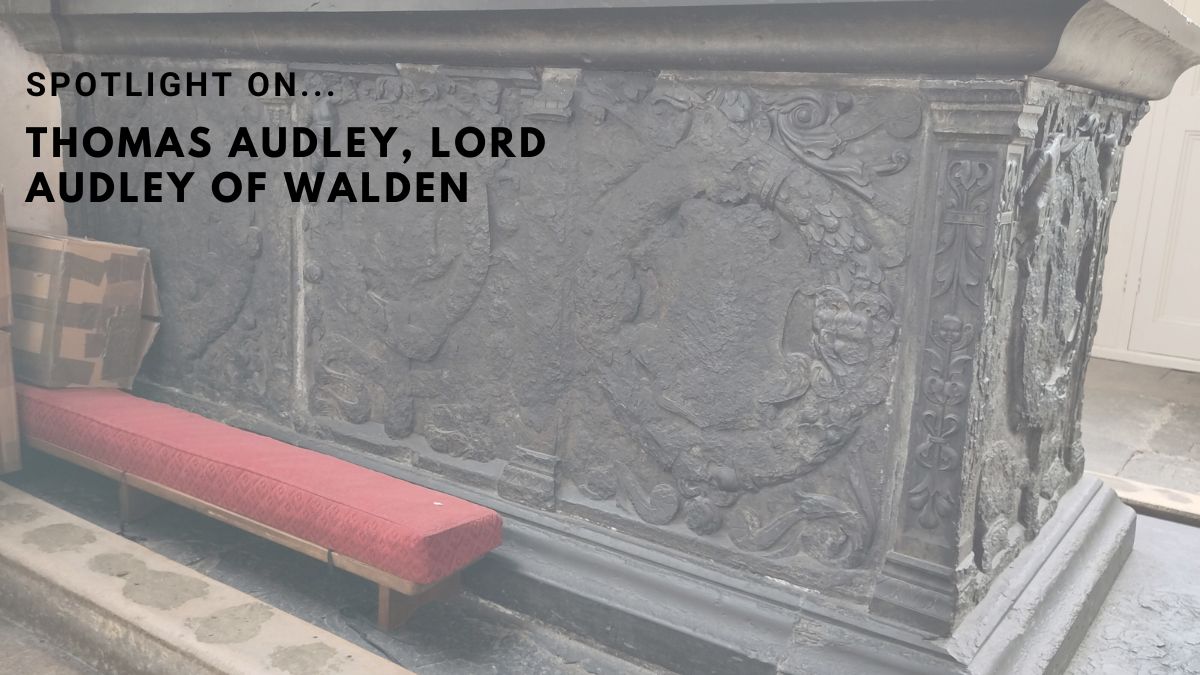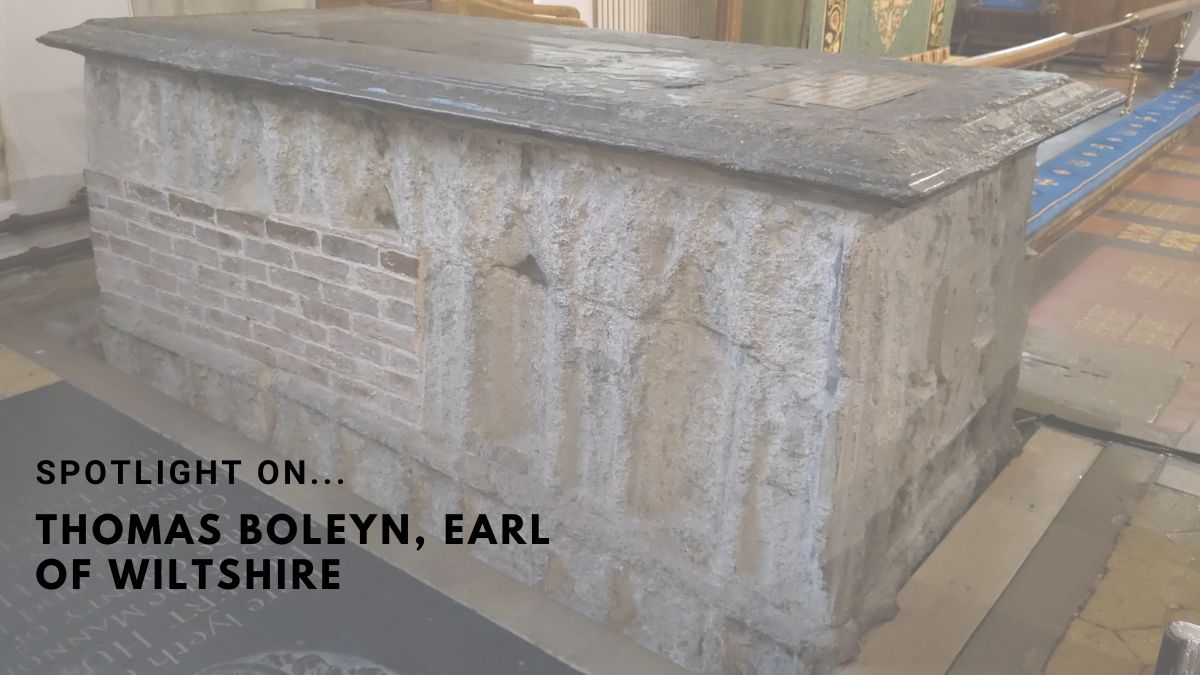Check out my new page with a map showing the location of memorials to Tudor noblemen – perfect for planning church crawls! I will be expanding the content to a wider time period and with more noblewomen & notable gentry.
Review: Shardlake episode 1
It is a somewhat bittersweet moment to be watching and reviewing the new Disney+ series Shardlake just a few days after the death of the author, C J Sansom.
I was gifted Dissolution back in 2004 when I was just getting interested in medieval and 16th-century history; I quickly fell in love with the character Sansom had created in Matthew Shardlake and the world he brought to life. I have since read all the books in the Shardlake series but Dissolution remains my favourite.
One of the most obvious changes for the adaptation is the decision to move Jack Barak’s first appearance from Dark Fire (book 2) to the events of Dissolution. He replaces Shardlake’s assistant, Mark Poer, travelling together to Scarnsea Abbey. It is a change that makes sense for a TV drama – especially if the hope is to continue with adaptations of the later books – however, as book readers will be aware, it is going to necessitate changing one of the later plot points. It will be interesting to see how the scriptwriter manages that change.
Continue reading “Review: Shardlake episode 1”Tomb: Lord Dacre – a monumental palimpsest
Whilst we like to think of memorials as providing a permanent monument to our presence in this world, the truth is that they are often altered, relocated or even removed to accommodate the needs of later generations. It is also not unusual to find memorials that have been repurposed. In the 16th century, palimpsest brasses were relatively common – memorial brasses that were either created by piecing together elements from other brasses or by engraving a new memorial on the reverse of an older brass. Less well documented are palimpsest sculptural effigies but one such memorial survives in Herstmonceaux, East Sussex.
Continue reading “Tomb: Lord Dacre – a monumental palimpsest”Catherine of Aragon: Victor of Flodden?
When James IV of Scotland invaded England in August 1513 Catherine of Aragon was acting as Regent but does that mean we should call her the victor of the battle of Flodden?
I have also written about the detail of Catherine’s actions in 1513 here.
Tomb: Thomas Lord Audley
Who was Thomas Audley?
Thomas Audley began his career as a lawyer at the Inner Temple in London, and a minor official in Essex. He was elected to parliament as MP for Colchester in 1523 and quickly came to the attention of Cardinal Wolsey and Henry VIII. A number of appointments and offices followed and, by the end of 1527, he was a member of Wolsey’s household and a groom of the King’s chamber. Audley was elected to the House of Commons again in 1529 and was appointed Speaker of the Commons. During the following parliament (1529-36), he played a key role in ensuring that the legislation was passed to enable Henry VIII’s divorce from Katherine of Aragon. He was appointed Keeper of the Great Seal in May 1532 and, on 26 January 1533, he was appointed Lord Chancellor.
As one of Henry VIII’s newly promoted men who had risen through administrative skill rather than birth or military prowess, Audley was loyal to Henry and the protection of royal interests. However, he was also keen to uphold the authority of parliament and the letter of the law, at times bringing him into conflict with other men. He never rose to the dizzy heights of men such as Thomas Cromwell but his administrative and legal skills were valued. He was called upon by the privy council for his legal expertise (especially in matters of treason), was a point of contact for foreign ambassadors in London, and his house was sometimes used as a jail – Agnes, dowager duchess of Norfolk, was held there in December 1541 before being transferred to the tower of London. He presided over the trial of Anne Boleyn’s alleged lovers and acted as a legal advisor at her trial; he also interrogated Katherine Howard and others about her alleged infidelity. He kept his personal religious beliefs close to his chest but, as he worked closely with Cromwell, helped bring about the break with the Catholic church, and benefitted from the dissolution of the monasteries he is often seen as an evangelical. In reality, it seems more likely that he was driven by his desire to serve the King than by religious fervour.
His loyalty and hard work were rewarded in November 1538 when he was made Baron Audley of Walden and in May 1540 when he was elected to the Order of the Garter. He amassed a large fortune from humble beginnings and one of his daughters would go on to marry Thomas Howard, 4th duke of Norfolk. Unlike men like Wolsey and Cromwell, Audley never fell from royal favour and retired from public life only as a result of ill health.
Where was he buried?
Thomas Audley died in London on 30 April 1544. His was body was taken to Essex to be buried in the church of St Mary the Virgin in Saffron Walden, near to his home at Walden Abbey.
Continue reading “Tomb: Thomas Lord Audley”The (lack of) coronations of Henry VIII’s wives
Tomorrow (6th May 2023), Charles III with be crowned and annointed in Westminster Abbey. Alongside him will be his second wife, Camilla, who will be crowned as Queen Consort. It seemed an apt time to consider the coronations, or rather, lack of coronations of four of Henry VIII’s wives.
Henry’s first wife, Catherine of Aragon, was crowned alongside him in a ceremony that took place on 24th June 1509, just 13 days after they had married. His second wife, Anne Boleyn, was crowned in a solo ceremony on 1st June 1533. They would be the only two of his wives to be crowned. So, why did the other women not get a coronation?
His third wife, Jane Seymour, was supposed to be crowned in 1536. However, the ceremony was postponed until the following year. On 3rd October 1536, the Holy Roman Emperor’s ambassador to England, Eustace Chapuys, wrote to Emperor Charles V saying that the coronation was delayed to the following summer “and some doubt it will not take place at all”. He then added that there was no sign that she would have children. The implication was clear, he believed that Henry would not crown his wife until he had a male heir. Queen Jane did eventually have the desired son but, as she died shortly after, she was never crowned.
Over the next ten years, Henry would have three further weddings but there would be no more coronations. The marriage to Anne of Cleves was annulled as soon as possible, Katherine Howard was executed for treason without children, and Katherine Parr also had no children with Henry VIII.
It does seem likely that Henry was once bitten, twice shy (or rather twice bitten, three times shy) when it came to crowning the women he married. His marriages to both Catherine of Aragon and Anne Boleyn were both annulled meaning that, legally, neither of them had been his wife. Therefore, neither of them should have been crowned as a Queen. The fact that the coronations had taken place was an embarrassment. An embarrassment that he was not prepared to risk happening again.
Review: Catherine and Anne exhibition at Hever Castle
Following on from last year’s “Becoming Anne” exhibition, this year the Hever castle curatorial team have put together a new exhibition – “Catherine and Anne: Queens, Rivals, Mothers”. It is promoted as an exploration of the similarities between two women (Catherine of Aragon and Anne Boleyn) who are usually viewed through the lense of their rivalry. At the centre of this exploration are two printed (and illuminated) Books of Hours – one owned by Catherine and one by Anne – which Kate McCaffrey has identified as coming from the same small print run in 1527. The exhibition also covers some aspects of their lives that are less widely known – in particular their childhoods and Anne’s sweating sickness in 1528 – and brings in costumes from film and television (Anne of a Thousand Days, Elizabeth, and Becoming Elizabeth).
Continue reading “Review: Catherine and Anne exhibition at Hever Castle”Review: Blood, Sex and Royalty episode 1
The new Netflix docudrama, “Blood, Sex and Royalty” has provoked somewhat of a Marmite reaction from viewers (for non-British readers, Marmite is a savoury spread made of yeast extract which is famous for provoking a polarising “love it or hate it” reaction). Scroll down for a short video of my reactions as I watched the show.
Continue reading “Review: Blood, Sex and Royalty episode 1”5 gift ideas for Tudor history fans
With Christmas fast approaching, there is still time to find the perfect gift for fans of Tudor history. But with so much available, what should you get for them? Read on for my five favourite gift ideas…. (I am not affiliated to any of these companies or products and have not been asked to promote them; these are my personal choices).
- BOOKS. There are a wealth of books about the Tudor period, but my two recommendations for year would be: The House of Dudley by Joanne Paul which traces three generations of the Dudley as they rose under Henry VII only to fall at the start of Henry VIII’s reign, rose again to great heights under Edward VI only to fall again with Lady Jane Grey, then rose again with Elizabeth I’s favouritism of Robert Dudley; and Mary Rose by Alexzandra Hildred, a beautifully illustrated coffee table book which will interest historians, archaeologists, divers and convservationists as it explores the story of the Mary Rose from her construction and sinking, to her underwater excavation, raising, and preservation.
What happened to the wives of Henry VIII?
Almost every fan of Tudor history will be familiar with the “Divorced, beheaded, died. Divorced, beheaded, survived” rhyme but it is not entirely accurate. Expanding on my blog post about Henry VIII’s three wives, I have made a video looking at what happened to Henry VIII’s wives and what the rhyme should really be!
Tomb: Thomas Boleyn earl of Wiltshire
Who was Thomas Boleyn?
For many people, Thomas Boleyn is famous as the father of Anne Boleyn. However, this is to do him a great injustice. Thomas’ parents had invested in his education and social advancement (securing Eliabeth Howard, daughter of the earl of Surrey, as Thomas’ wife) and, when Henry VIII became king in 1509, Thomas was one of the young king’s favoured companions. He was made a knight of the Order of the Bath on the occasion of the King’s coronation, and regularly appeared at court. He was charming, athletic, skilled in aristocratic pursuits such as hunting and hawking, and he was a talented linguist. This made him both an ideal courtier and well suited to diplomatic work. He travelled abroad on numerous diplomatic missions, including time spent as resident ambassador in France. It was due to his diplomacy that he was able to obtain places for his daughters, Anne and Mary, at the French royal court. When his daughters returned to the English court and caught the attention of Henry VIII, Thomas rose rapidly in royal favour becoming first Viscount Rochford and then Earl of Wiltshire and Earl of Ormond. Anne’s marriage to Henry lifted her family to giddy heights but, with her death, it was returned largely to obscurity. Her father and mother were not implicated in the alleged crimes of their children but her mother died two years later, in 1538. Thomas died on 12 March 1539. Mary Boleyn died in 1543 and the remaining Boleyns, siblings of Thomas, showed no desire or talent for excelling at the royal court.
If you want to know more about Thomas Boleyn, I can recommend reading Lauren Mackay’s book Among the Wolves of Court.
Where is he buried?
Continue reading “Tomb: Thomas Boleyn earl of Wiltshire”


